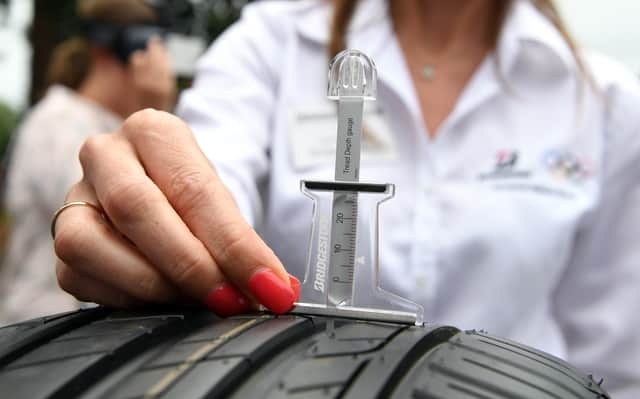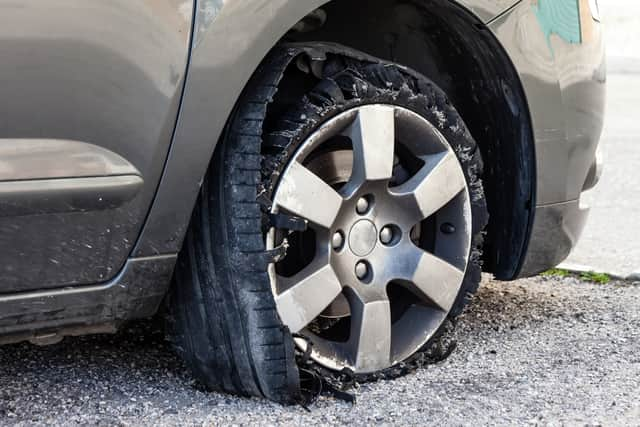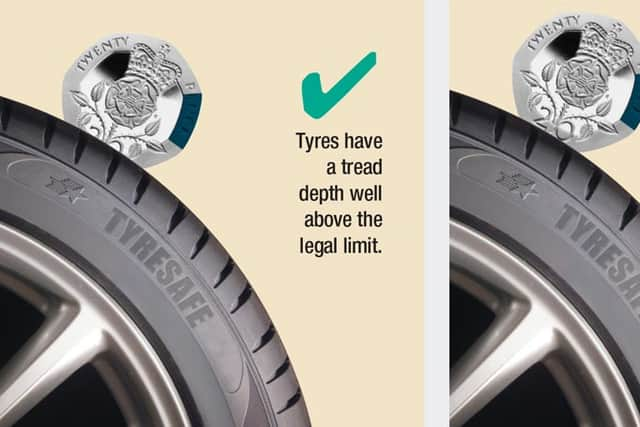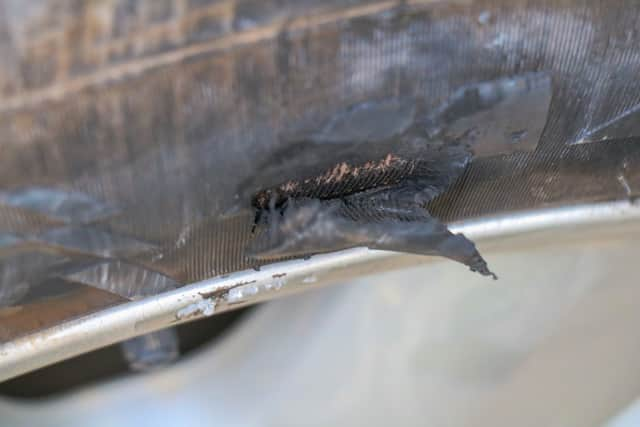How to check car tyres: Expert advice on tread, pressure and damage ahead of Easter getaway


With the Easter holidays fast approaching many families will be planning day trips or longer getaways.
For some, it could be the first long journey they have made in months and experts are urging drivers to make sure their car is properly prepared before setting off.
Advertisement
Hide AdAdvertisement
Hide AdAmong the key elements to check are tyres. They not only have a major impact on your safety but they can also affect your fuel economy and the comfort of you and your passengers, so we sought the advice of experts from tyre maker Bridgestone on how to check your tyres properly.
Bridgestone’s technical manager Gary Powell said: “Your tyres are the only contact point between your vehicle and the road. They perform a crucial safety roll in acceleration, braking, steering and stopping, so they must be in good condition, maintained at the correct pressure and have sufficient tread to enable you to stop safety - especially in poor weather and road conditions.”


How to check tread depth
Gary continues: “The law states the absolute minimum tread depth is 1.6mm of tread across a continuous band of three-quarters of the tyre width, around the entire circumference. Failure to comply could result in a fine of up to £2,500 & three penalty points per tyre.
“Ideally, your tyre tread depth should be checked at least once a month at the same time that you check your tyre pressure.”
Advertisement
Hide AdAdvertisement
Hide AdThere are two simple ways to check tyre tread depth - one using a special tool and the other a simple 20p piece.


Insert a 20p coin into the main tyre grooves at several places around the circumference of the tyre and across its width.
If the outer band of the 20p coin is visible whenever you check the tread, your tread depth may be illegal and you should have them checked by a specialist.
A tread depth gauge is also good.
Place the gauge into the main tread grooves at several places around the circumference of the tyre and across its width.
Advertisement
Hide AdAdvertisement
Hide AdIf the gauge records a reading of less than 1.6mm in any location then as stated, the tyre may be illegal and you should get it replaced.
It is worth mentioning here that safety is reduced as tread depth decreases, so Gary advises considering replacing your tyres well before they reach the legal minimum.
Checking tyre pressure
Like tread depths, tyre pressures should be checked at least once a month, or before long journeys, too.
Your tyre pressures should be checked against the vehicle manufacturer’s recommended level, which can be found in the vehicle handbook and often on a plate located inside the fuel filler cap or on the driver’s door sill.
Advertisement
Hide AdAdvertisement
Hide AdAlways make sure your tyres are cold (have travelled less than two miles) and the vehicle is parked on level ground before checking the pressures. Check every tyre - including the spare - and make sure you’re using the correct pressure scale for the gauge being used (Bar, PSI or KPa).
Remember, if you are carrying a full load of passengers or luggage, or towing a trailer or caravan, pressures should be increased. The manufacturer’s guidelines will include different settings for partially or fully-laden vehicles.
Visual inspection


When checking your tread depth and pressure you should also give the rest of the tyres a visual inspection.
Remove any stones or other objects caught in the tread and check the whole tyre for any cuts, splits or bulges. Such damage can lead to a sudden loss of pressure in the tyre, which is potentially dangerous for you and other road users.
Comment Guidelines
National World encourages reader discussion on our stories. User feedback, insights and back-and-forth exchanges add a rich layer of context to reporting. Please review our Community Guidelines before commenting.
